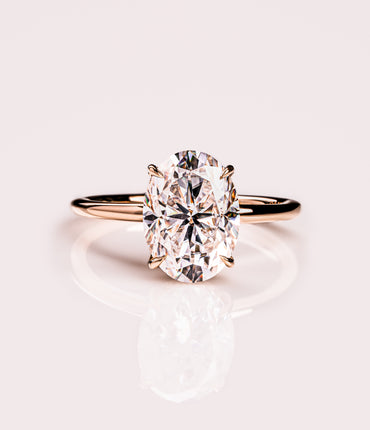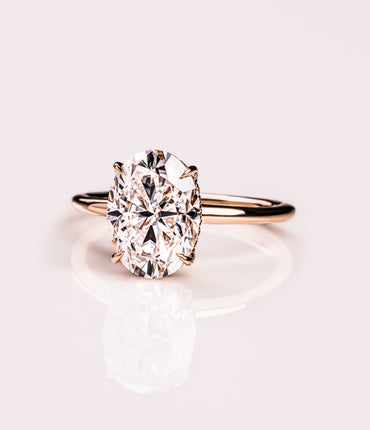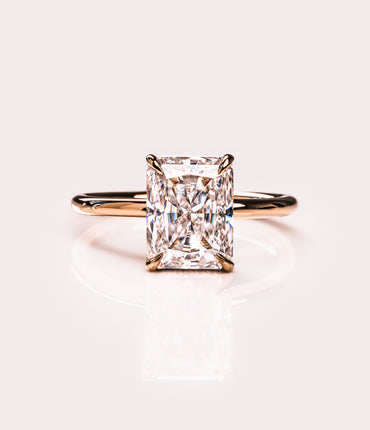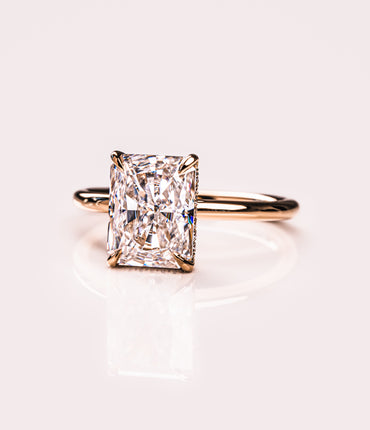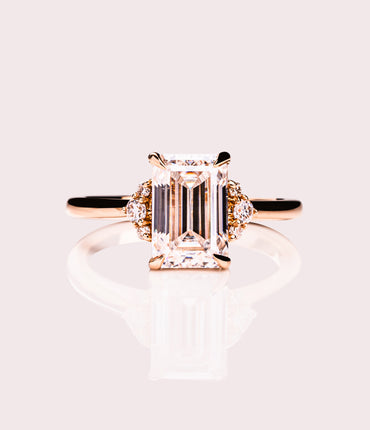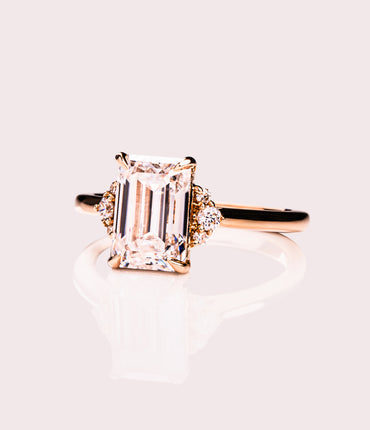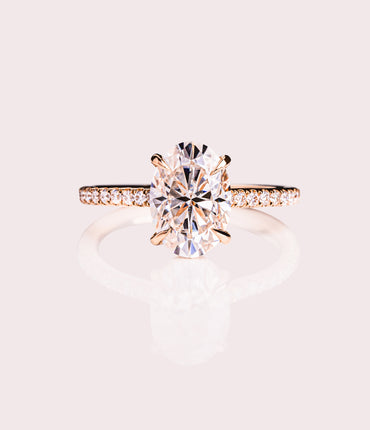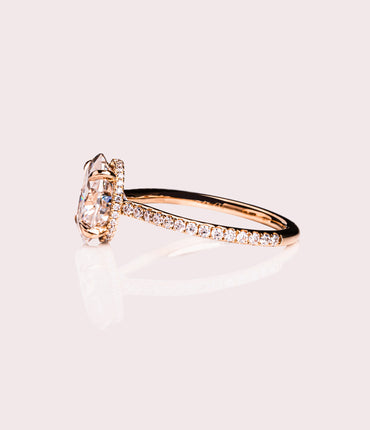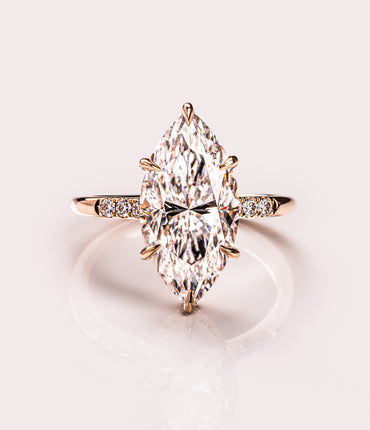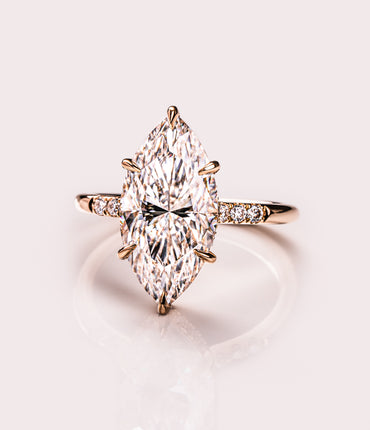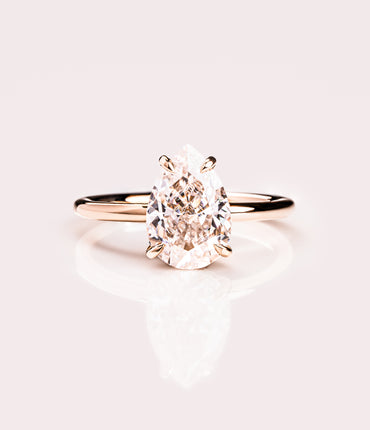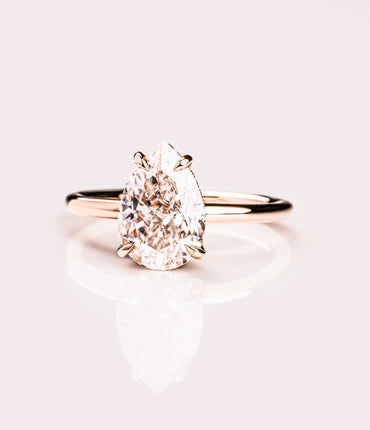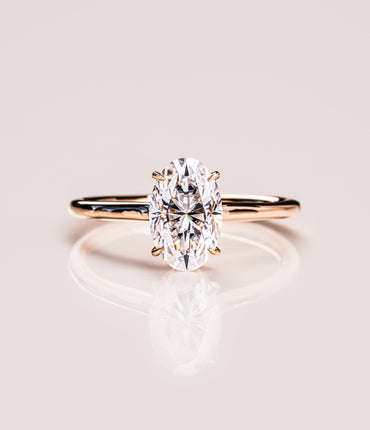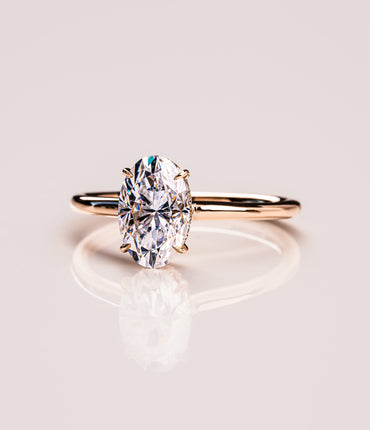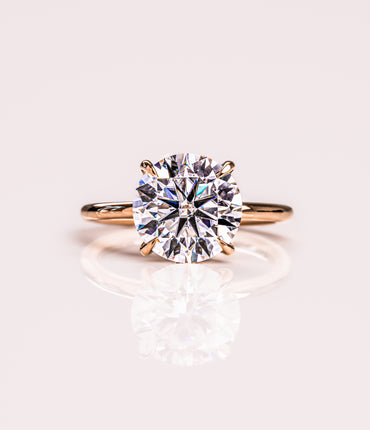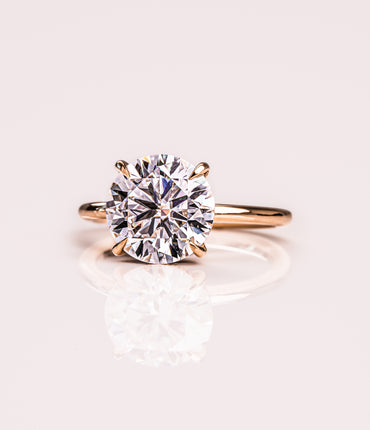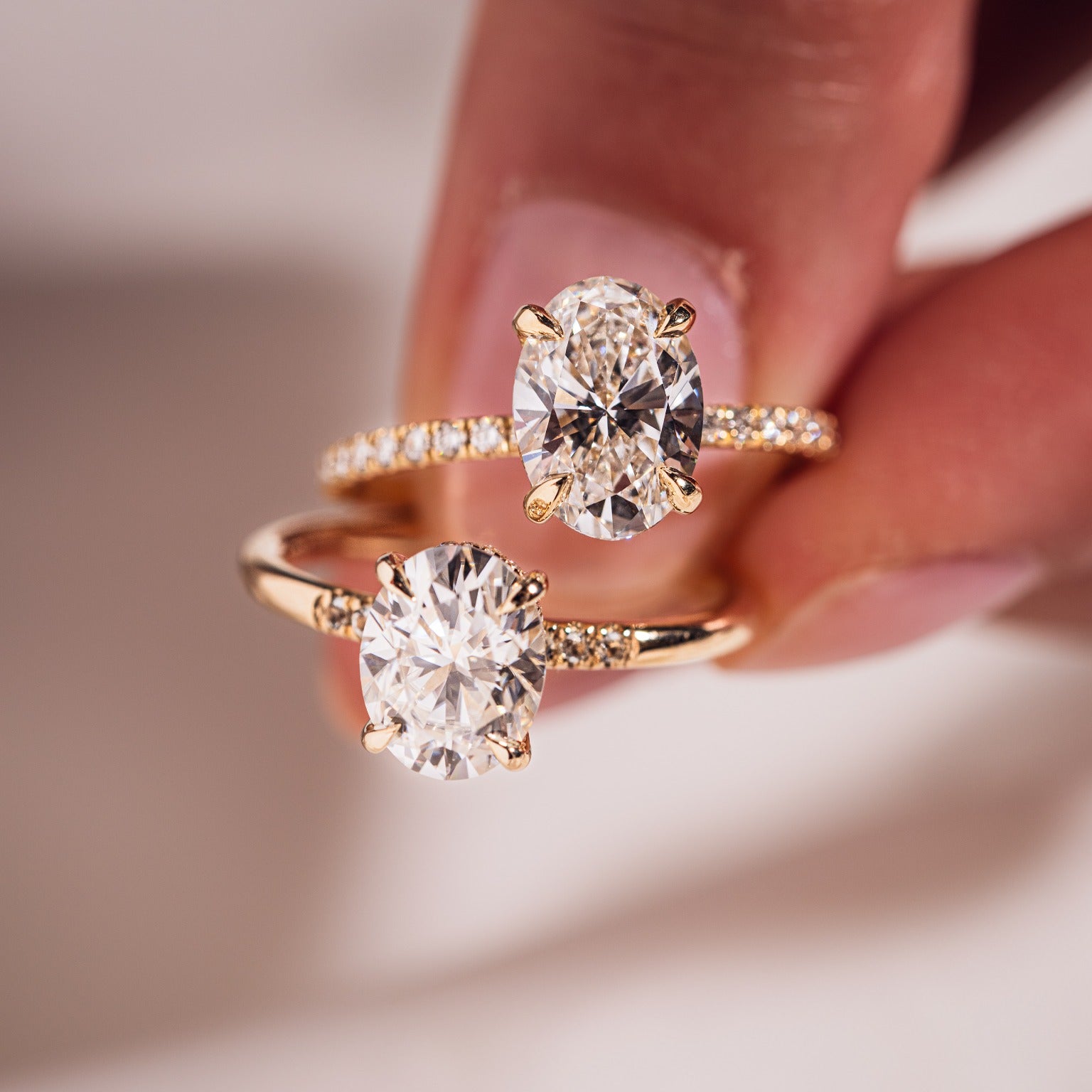
Considering a lab-grown gemstone for your engagement ring or piece of fine jewelry?
What is Moissanite?
Since natural moissanite is incredibly rare, most moissanite on the market today is created in laboratories. As such, lab-created gemstones offer striking appeal with minimized environmental impact. Due to the moissanite’s bright appearance and lasting durability, the gemstone has become an increasingly popular choice of diamond alternative.
All Zen Moissanite gemstones are conflict free, eco-friendly, and completely sustainable. Since each design is handcrafted with the highest quality of moissanite gemstones, you can have peace of mind when choosing your forever ring.
What is a Lab Grown Diamond?
What Are the Differences Between Moissanite and Lab-Grown Diamonds?
To learn more about the differences between lab-grown diamonds and moissanite gemstones keep scrolling!

Moissanite
- Ranked a 9.25 on the Mohs Hardness Scale
- Refractive index of 2.65
- More brilliance, fire, and sparkle
- Colourless appearance

Lab-Grown Diamonds
- Ranked a 10 on the Mohs Hardness Scale
- Refractive index of 2.42
- White bright sparkle with subdued colour
- Colourless appearance
Moissanite vs Lab Grown Diamond Price

Moissanite vs Lab Grown Diamond Price

Moissanite vs Lab Grown Diamond Price

Moissanite vs Lab Grown Diamond Price

Moissanite vs Lab Grown Diamond Price
“ Many clients have shared that they prioritize saving for travel, or the down payment on a house, rather than spending tens of thousands on mined diamonds. ”
Myths About Lab Grown Gemstones
But did you know?
As lab grown gemstones gain popularity, the diamond industry has seen a major shift in production practices. This is because the conscious couple no longer wants gemstones that are only visually appealing, but also ethically sourced and affordably priced. That’s why, we’re here to debunk 4 common myths surrounding these precious stones!
Myths About Lab Grown Gemstones
We’ve all heard myths about purchasing a lab-grown gemstone. Ones like choosing a lab-grown stone is “cheating,” or that they’re “trying too hard” to be diamonds. We believe it’s important to debunk the lies surrounding these stones, so they can have their time in the spotlight. In fact, as lab grown gemstones gain popularity, the diamond industry has seen a major shift in production practices. The conscious couple no longer wants gemstones that are only visually appealing, but ethically sourced and affordably priced. While we believe these gemstones to be truly one-of-a-kind, there are factors to consider when purchasing your lab grown stone. We’ll discuss common myths about lab-created gemstones so you can be sure you’re informed before making your decision.

#1. Lab-Grown Diamonds Aren’t Real Diamonds

#2. Lab-Grown Gemstones Don’t Have Value

#3. Lab-Grown Gemstones Are “Cheating”

#4. Lab-Grown Gemstones Can’t be Insured
How to Choose Between Lab-Grown Diamonds and Moissanite
PAIEMENT DE CONFIANCE
















